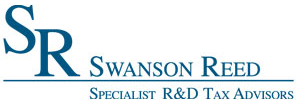OKLAHOMA INVENTIONINDEX | OCTOBER 2025
October 2025: 4.29% (A+ grade)

Oklahoma inventionINDEX October 2025: 4.29% (A+ grade)
The inventionINDEX measures innovation output by comparing GDP growth with patent production growth.
Anything over C grade is positive sentiment; anything under C is negative outlook/sentiment. Using that sentiment, it is possible to observe trends over time, and also compare states/countries. In doing so, we can predict which states have the best chance to recover economically from the pandemic (or any other economic incident that may occur).
Oklahoma inventionINDEX Scores – Last 12 months
| Month | inventionINDEX Score |
| October 2025 | 4.29% |
| Sep 25 | 2.67% |
| Aug 25 | 1.64% |
| Jul 25 | 4.29% |
| Jun 25 | -2.33% |
| May 25 | 1.50% |
| Apr 25 | 4.00% |
| Mar 25 | 2.97% |
| Feb 25 | 2.38% |
| Jan 25 | 1.35% |
| Dec 24 | 1.79% |
| Nov 24 | 1.50% |
| Oct 24 | 2.38% |
The Oklahoma inventionINDEX for October 2025 stands at a robust 4.29%, earning an A+ grade. This figure not only represents a positive sentiment but also surpasses the average of the previous year and continues an upward trend observed throughout the year. A higher inventionINDEX score, particularly one in the A range, signifies a strong and healthy innovation output within the state. This positive momentum suggests a thriving environment for new ideas and patent production, which are crucial indicators of economic vitality and future growth potential. Such a grade can attract investment, foster business expansion, and ultimately contribute to a more resilient and prosperous economy.
Conversely, a lower inventionINDEX score, especially those falling below a C grade, indicates a negative outlook or sentiment regarding innovation. For instance, June 2025 saw a score of -2.33% with an F grade, and there have been other instances of D+ and F grades in the historical data. These lower scores suggest a deceleration in innovation output, potentially due to various factors such as reduced research and development capabilities, company closures, or a general economic downturn. The implications of a sustained lower score can be significant, potentially leading to a less competitive economic landscape, a decline in new business ventures, and a slower recovery from economic challenges.
Analyzing the historical data, the Oklahoma inventionINDEX has experienced fluctuations over the last 60 months. While October 2025’s A+ grade is a strong performance, there have been periods of lower scores, such as the F grades in June 2025, July 2022, January 2022, December 2021, and October 2021. This variability highlights the dynamic nature of innovation and the various internal and external factors that can influence it. Observing these trends over time allows for a deeper understanding of the state’s economic resilience and its capacity to adapt to changing circumstances.
The inventionINDEX serves as a valuable tool for predicting economic recovery, particularly in the wake of events like the pandemic. A consistently high grade indicates a state’s strong potential to rebound economically, as innovation often drives new industries and job creation. Conversely, states with persistently low scores may face greater challenges in economic recovery, as a lack of innovation can hinder their ability to adapt and grow. Therefore, understanding and striving for a higher inventionINDEX score is paramount for long-term economic stability and progress.
Discussion:
In October, the Oklahoma inventionINDEX scored a positive sentiment which was higher than the previous year’s average and outperformed the upward trend for the year. This is similar to the prior 12 months, which experienced a considerable upward trend.
As the economy continues to stabilize in the post-pandemic era, it remains uncertain whether any backlog of applications still exists or if the department has returned to normal processing timelines. The inventionINDEX could also be affected by lingering consequences from the pandemic, such as company closures, reduced workforces, and limited R&D capabilities, which may still be impacting current operations.
Learn More:
Are you thinking of patenting any of your bright ideas? Did you know your research work could be eligible for the R&D Tax Credit and you can receive up to 14% back on your expenses? To find out more, please check out our free online eligibility test.
Swanson Reed’s Oklahoma office provides R&D tax credit consulting and advisory services to Oklahoma City, Tulsa, Norman, Broken Arrow, Lawton, Edmond, Moore, Midwest City, Enid, and Stillwater.
Feel free to book a quick teleconference with one of R&D tax specialists if you would like to learn more about R&D tax credit opportunities.
Who We Are:
Swanson Reed is the largest Specialist R&D tax credit advisory firm in the United States. With offices nationwide, we are one of the only firms globally to exclusively provide R&D tax credit consulting services to our clients. We have been exclusively providing R&D tax credit claim preparation and audit compliance solutions for over 30 years.
Swanson Reed hosts daily free webinars and provides free IRS CE and CPE credits for CPAs. For more information please visit us at www.swansonreed.com/free-webinars or contact your usual Swanson Reed representative.
What is the R&D Tax Credit?
The Research & Experimentation Tax Credit (or R&D Tax Credit), is a general business tax credit under Internal Revenue Code section 41 for companies that incur research and development (R&D) costs in the United States. The credits are a tax incentive for performing qualified research in the United States, resulting in a credit to a tax return. For the first three years of R&D claims, 6% of the total qualified research expenses (QRE) form the gross credit. In the 4th year of claims and beyond, a base amount is calculated, and an adjusted expense line is multiplied times 14%. Click here to learn more.
R&D Tax Credit Preparation Services
Swanson Reed is one of the only companies in the United States to exclusively focus on R&D tax credit preparation. Swanson Reed provides state and federal R&D tax credit preparation and audit services to all 50 states.
If you have any questions or need further assistance, please call or email our CEO, Damian Smyth on (800) 986-4725.
Feel free to book a quick teleconference with one of our national R&D tax credit specialists at a time that is convenient for you.
R&D Tax Credit Audit Advisory Services
creditARMOR is a sophisticated R&D tax credit insurance and AI-driven risk management platform. It mitigates audit exposure by covering defense expenses, including CPA, tax attorney, and specialist consultant fees—delivering robust, compliant support for R&D credit claims. Click here for more information about R&D tax credit management and implementation.
Our Fees
Swanson Reed offers R&D tax credit preparation and audit services at our hourly rates of between $195 – $395 per hour. We are also able offer fixed fees and success fees in special circumstances. Learn more at https://www.swansonreed.com/about-us/research-tax-credit-consulting/our-fees/
Choose your state


















